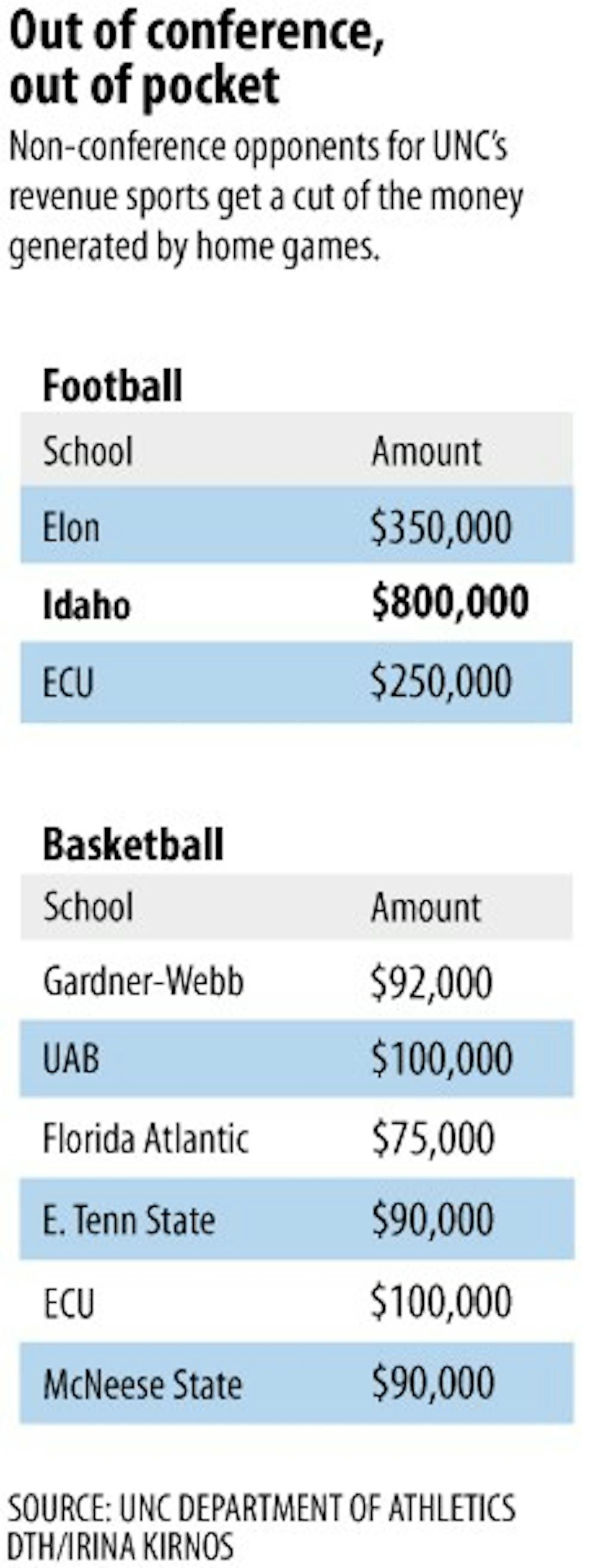UNC will pay Elon $350,000 for its 62-0 loss on Sept. 1. The University will pay Idaho $800,000 — double its normal high end of $400,000.
Profit aside, one-and-done games let UNC schedule an extra home game the next season without worrying about having to play a contractually obligated away game.
‘A domino effect’
The story behind the UNC-Idaho game began in 2005.
That year, the University of Tennessee and UNC agreed to play each other in 2011 and 2012. Before those games transpired, however, the Volunteers fired their head coach, hired a new one and cancelled the series in 2011.
The University got $750,000 per the contract’s buyout clause, and UNC’s schedules for both years were thrown in disarray.
“When somebody drops someone, they think it just involves one team,” Gallo said. “It can be a domino effect.”
UNC lucked out when the University of Georgia dropped a game with the University of Louisville. The Cardinals signed a home-and-home contract and replaced Tennessee.
But the last-minute uncertainty Tennessee unleashed meant UNC had less time to fill out its 2012 schedule. The contract with Idaho was drawn up in October.
*Banking on football *
Scheduling seven home games is important for the athletic department. Besides giving fans more opportunities to see the Heels at Kenan, it squeezes more money from the athletic department’s biggest money-maker.
Data provided to the Department of Education in 2010-11 show that the basketball program brought in $19.7 million. The football team brought in $26.4 million — more than one-third of the athletic department’s $71.4 million take that year.
To get the day's news and headlines in your inbox each morning, sign up for our email newsletters.
“It’s big time revenue that we bank on,” Gallo said.
The football team could operate without the money, but other sports depend on it. The fewer home games the football team plays, the harder things become for others.
Cost of doing business
The importance of football revenue to bigger athletic departments like UNC’s is reflected in the difference between payments for football and basketball non-conference home games.
This year, the largest of the six basketball payouts are $100,000 each for ECU and the University of Alabama at Birmingham. By comparison, the smallest football payment is ECU’s $250,000.
Smaller schools also benefit from one-and-done games.
“They’re looking for an opportunity to showcase their program and to help their budget,” former UNC Athletic Director Dick Baddour said.
Kyle Wills, Elon’s athletic business director, said his school’s football players like the opportunity to play against teams with big names and bigger stadiums.
Wills said Elon calculates its athletic budget in part from money it receives from football games like the one it played against UNC, although he declined to say how much.
One-and-done games can be an important income stream for smaller sports programs. In 2010-11, Department of Education data show Elon’s football program brought in 22.7 percent of its $17.2 million in athletic revenue.
In the same year, Idaho’s football team was responsible for a whopping 45.7 percent of the $16.8 million its athletic department brought in.
“It’s just part of being a lower-level (NCAA) Division 1 school,” Wills said.
From the stands
Fans at the East Carolina game had mixed views of this year’s non-conference schedule.
Bill Browning, who’s been a Rams Club member for 25 years, enjoys the friendlier feel of games against smaller opponents. But he wasn’t sure if he’d make the trip from Charlotte for the Idaho game.
“That’s a waste of my time and money,” he said.
Paola Cardona, a freshman with a giant “L” painted on her torso, was less discerning.
“It’s just fun to be home, no matter who we play,” she said. “As long as we’re not losing, money doesn’t matter.”
Contact the desk editor at university@dailytarheel.com.



